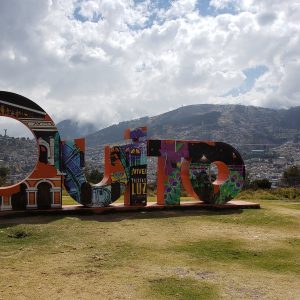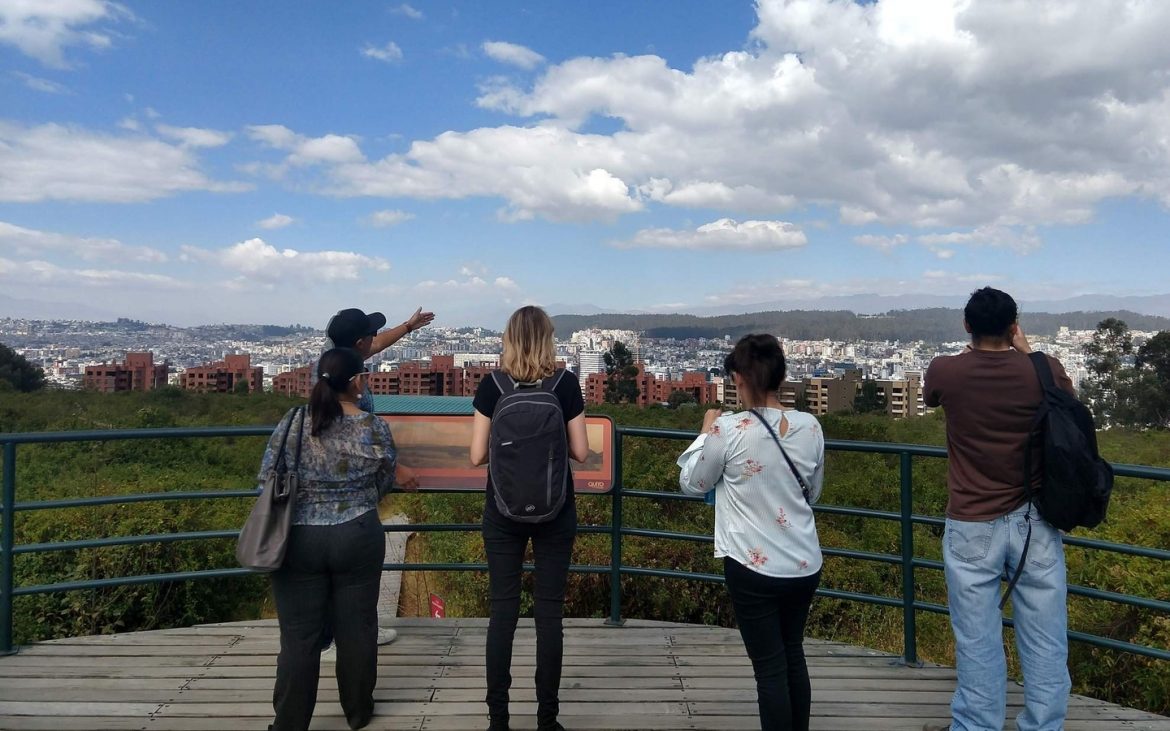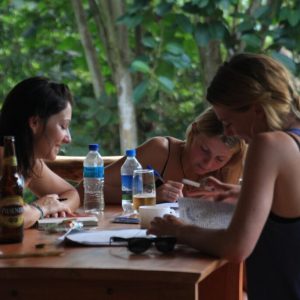 In one word: perfect.
In one word: perfect.
Let me back that up with some facts. Air-conditioning and whole-house heating are obsolete in almost every home in Quito. The high hovers around a mild 70 degrees Fahrenheit (20 degrees Celsius), and nighttime lows glide down to a prime range for sleeping deeply beneath a fluffy comforter.
Some like to call it a „Goldilocks“ climate–not too hot, not too cold, just right.
With such stable conditions, you may be thinking, „Oh, no! I’m going to have to invent a new small talk topic!“ But don’t fret. There’s just enough changing patterns of clouds, rain, and wind to fuel your little conversations.
Isn’t Quito on the equator? Shouldn’t it be super hot?
With a latitude of just -0.23 degrees, Quito’s location close to the equator has a lot to do with its climate. However, its altitude of 9,350ft (2850m) balances the heating powers of the equatorial sun.
We’re warning you – Ultraviolet radiation is intense since traveling to Quito means you’re moving closer and closer to this skin-burning, plant-growing, light-giving machine.
Less atmosphere between you and the sun means less protection against UV rays. The mild temperature might not prompt you to slather on the sunscreen, so at Vida Verde, we’ll remind you again and again– „Usa protector solar“ (Use sunscreen).
Climbing up from Quito to peaks like Cotopaxi or Chimborazo will cool you down. Coasting down to the beautiful beaches of Ecuador like in Puerto Lopez will remind you that the sun is a humongous ball of burning gas…and to be taken seriously when it’s shining at full strength.
What About Winter in Quito?
Coming from Wisconsin („in the North/almost Canada“ is how I usually describe the location), I don’t quite understand how the months November to May could be called „invierno“ (winter) when a heavy coat, hats, and gloves aren’t necessary, and there isn’t ice and snow on the roads.
This season, however, is slightly cooler, and it brings with it more rain and milder daily highs. On average, each day has a 30% chance of precipitation. Despite the slightly less sunny days, this is still a fantastic time to visit Quito!
For any rainy afternoons, you can check out our blog, „What to do on a weeknight,“ which gives you plenty to keep you occupied.
What Should I Pack for Ecuador?
What you pack will depend on if you plan on sticking around Quito, or also traveling to the Coast or the Jungle.
For your time in Quito, long pants, short-sleeved shirts, and a sweater or jacket will keep you comfortable throughout a brisk morning or a sunny afternoon.
On the coast, the weather is much warmer–just what you would expect from its location on the equator. If you’re spending time there, you’ll want lighter clothes that can keep you fresh.
You’ll also need a different wardrobe for a trip to the jungle–like the GAIA lodge near Tena, Ecuador, where many Vida Verde students go for our learn Spanish in the Jungle program. You’ll want clothes that can keep you cool and comfortable and keep mosquitos out.
It’s a Perfect Temperature for Learning Spanish
When my grandma heard I was going to Quito, Ecuador for the year she said, „Wow, everyone must walk around in bikinis there.“ That’s…a misconception :).
So, sorry, you’ll have to wear more than swimwear while walking through the streets here, but besides that, Quito is just about perfect.
Perfect for a vacation anytime of the year, and perfect for learning Spanish!
One more fact: Surprisingly, there’s a prime temperature for learning in general according to science…and guess what: Quito’s constant noontime temp is about the closest you’ll get.





